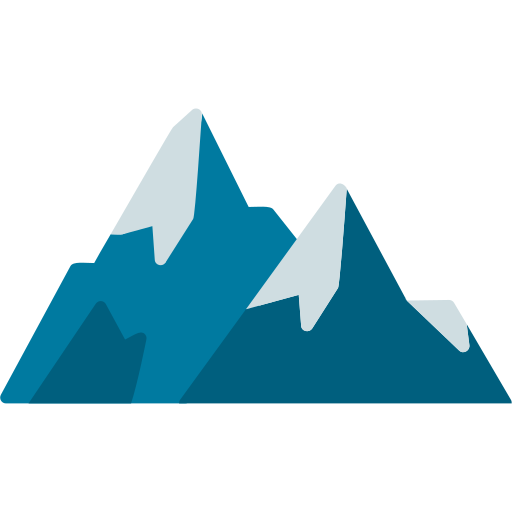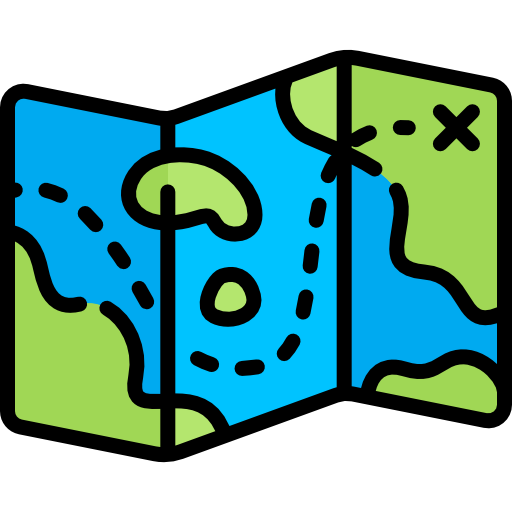Panchkedar Trek
40000 / Per Person

Altitude :
12000 Ft.

Duration:
12 Days

Trek Length
107 KM

Base Camp:

Trek Difficulty :
Moderate to Difficult

Altitude :
12000 Ft.

Duration:
12 Days

Trek Length
107 KM

Base Camp:

Trek Difficulty :
Moderate to Difficult
Overview
Panch Kedar Trek & Drive
Duration: 12 Days
Type: Pilgrimage & Adventure
Season: Summer | Monsoon | Autumn
Months: May | June | September | October | November
Location: Uttarakhand, India
Altitude: 12,000 Ft
Difficulty: Moderate to Difficult
Distance: 107 Km
Stay: Hotel/Guesthouse/Homestay/Camps (Triple/Quad Sharing)
Food: Veg & Eggs (Meals during trek & stay)
Railhead: Haridwar/Rishikesh
Airport: Jolly Grant Airport, 21 km from Rishikesh
Meeting Point: Opposite Shiv Vilas Hotel, Tapovan, Rishikesh
Reporting Time: 6:00 AM
Drop Time: 6:30 PM – 7:30 PM (Subject to weather & road conditions)
Transport: Rishikesh to Rishikesh (Included)
GST: +5%
Why Panch Kedar Trek?
This trek takes you through five sacred Shiva temples—Kedarnath, Tungnath, Rudranath, Madhyamaheshwar, and Kalpeshwar—offering a perfect blend of spirituality and adventure. These shrines, tied to Mahabharata legends, provide breathtaking views of the Himalayas. The trek features diverse landscapes, from dense forests and alpine meadows to waterfalls and snow-capped peaks.
Highlights of the Trek
Kalpeshwar: First temple in the journey, offering serene landscapes with views of Nanda Ghunti and Trishul.
Rudranath: Challenging yet rewarding trek through forests and meadows with panoramic mountain views.
Tungnath & Chandrashila: Highest among the Panch Kedar, offering 360-degree Himalayan views.
Madhyamaheshwar: Peaceful trek through lush forests, with stunning views of Chaukhamba and Kedarnath peaks.
Kedarnath: The most revered temple, situated at 11,700 feet, surrounded by majestic peaks.
Best Time to Visit
May-June & September-October: Ideal trekking conditions with clear skies and pleasant temperatures.
The Panch Kedar Trek is a soul-stirring journey combining mythology, adventure, and nature’s beauty, making it an unforgettable experience for trekkers and devotees alike.
Itinerary
Day 1: Rishikesh to Pipalkoti
Altitude: 1,340m (4,400ft)
Distance: 215 km | 8-9 hrs
Day 2: Pipalkoti – Kalpeshwar – Pipalkoti
Altitude: 2,100m (6,900ft)
Distance: 70 km (round trip) | 4 hrs
Day 3: Pipalkoti – Sagar Village – Trek to Lyuti Bugyal
Altitude: 3,000m (10,000ft)
Drive: 30 km | 1 hr
Trek: 8 km | 6-7 hrs
Day 4: Lyuti Bugyal – Rudranath – Return
Altitude: 3,550m (11,600ft)
Trek: 18 km (round trip) | 10-12 hrs
Day 5: Lyuti Bugyal – Sagar Village – Drive to Chopta
Altitude: 2,900m (9,500ft)
Trek: 8 km | 4-5 hrs
Drive: 35 km | 1-2 hrs
Day 6: Chopta – Tungnath – Chandrashila (Optional)
Altitude: 3,700m (12,000ft)
Trek: 8-9 km (round trip) | 7-8 hrs
Day 7: Chopta – Ransi – Trek to Gaundhar
Altitude: 1,800m (5,800ft)
Drive: 90 km | 3-4 hrs
Trek: 6 km | 4-5 hrs
Day 8: Gaundhar – Madhmaheshwar
Altitude: 3,200m (10,600ft)
Trek: 10 km | 6-7 hrs
Day 9: Madhmaheshwar – Ransi – Drive to Guptakashi
Altitude: 1,400m (4,500ft)
Trek: 16 km | 8-9 hrs
Drive: 45 km | 2-3 hrs
Day 10: Guptakashi – Gaurikund – Trek to Kedarnath
Altitude: 3,600m (11,700ft)
Drive: 35 km | 2-3 hrs
Trek: 16 km | 8-9 hrs
Day 11: Kedarnath – Gaurikund – Return to Guptakashi
Trek: 16 km | 8-9 hrs
Drive: 35 km | 2-3 hrs
Day 12: Guptakashi to Rishikesh
Distance: 180 km | 7-8 hrs
Notes:
Keep a buffer day for flexibility. If unused, explore Rishikesh.
Carry ID proof (original & copy).
Arrive a day early if flying in.
Inclusion & Exclusion
Inclusion
1. Accommodation (as per the itinerary):
- All the Accommodations are in triple and quad sharing in the Hotel, Guesthouse, camp, and cottage.
2. Meals (Pure veg):
- Day 1 dinner to day 11 dinner
- Breakfast, Lunch, Dinner (as per the hotel/homestay menu)
- 1 cup of tea twice a day (morning/evening)
- Everyday refreshment before starting the trek
3. Support:
- 1 Versatile base camp manager: handles communication and deploys extra manpower in emergencies.
- 1 Mountaineering & First aid qualified professional trek Leader.
- Local experienced guides (Number of guides depending on the group size).
- Enough support staff.
4. First aid:
- Medical kit, Stretcher, Oxygen cylinder, Blood pressure monitor, Oximeter, Stethoscope.
5.Transportation (as per the itinerary):
- Transport from Rishikesh to Rishikesh.
- All road transfers are by AC Vehicle, like Innova / Tempo traveler.
6. Cloakroom facility available for additional luggage
7. All necessary permits and entry fees, up to the amount charged for Indians.
8. Trek Completion Certificate
Exclusion
1. Insurance (Mandatory).
2. Any meals apart from mentioned in the inclusions.
3. Any kind of personal expenses.
4. Mule or porter to carry personal luggage.
5. Emergency evacuation, hospitalization charge or etc.
6. Any extra costs incurred due to extension/change of the itinerary due to natural calamities roadblocks, vehicle breakdown, etc. factors beyond our control.
7. Registration for Kedarnath. Follow the link to register for Kedarnath .
8. Anything not specifically mentioned under the head Inclusion.
Fitness
As you climb to higher altitudes, the air grows thinner and less oxygen is present. The amount of oxygen in our blood is equivalent to the proportion of haemoglobin that is saturated with oxygen. At altitudes above around 2,100 metres (7,000 feet), the amount of oxygen carried by our blood starts to decrease. At the same time, the human body possesses both immediate and long-term adaptations to altitude that help it somewhat compensate for the shortage of oxygen.
A Great First Trek for Anyone Who Wants to Get Into Hiking:
- The Bali Pass trek is an Easy to Moderate level trek in terms of fitness requirements. The track is well-marked and has only modest inclines and declines. Water fountains may be seen at various points throughout the path. However, it’s still best to be ready if you’re planning your first major Himalayan trekking adventure. Here is a plan for getting in shape for the trip.
- Our hikes are typically designed such that you cover around 9 kilometres in six hours, however this might vary somewhat depending on the terrain. It’s about the same as walking 6 kilometres an hour over the plains, therefore the speed is around 1.5 kilometres per hour.
- Following this plan, you may train yourself to run 3 kilometres in 30 minutes. Always begin your workout routine with some light stretching and warm-up moves.
- Follow this training schedule for trekking fitness required:
- Week 1: Walk for 10 minutes at a fast pace, jog for 10, and finish with a slow stroll for 10 minutes.
- Week 2: 15 minutes of jogging, followed by a 5-minute brisk walk. A leisurely stroll that takes no more than 5 minutes
- Week 3: Walk briskly for five minutes. Jogging for 15 minutes A brisk stroll that takes no more than 5 minutes
- Week 4: Do a brisk 5-minute walk, then a 25-minute jog, and finish with a 5-minute cool down.
Safety
Points to remember for safety in the trek:
- It is essential that you arrive at the starting point of any hike or excursion in the best possible physical condition and readiness.
- The hike is not tough; in fact, if you can keep both your feet and your mind calm and strong during the journey, you will discover that the hike is rather simple.
- When you are out on a hike, bear in mind that you may not always be with your guide and that you may not always be on the correct trail.
- The majority of individuals glance both where they are going and where they are going while they are walking; this might produce twitching in your legs, which can make the whole journey difficult.
- It is imperative that you see your physician if you are experiencing any kind of health issue.
- It is imperative that I have my medical equipment with me at all times; it is of the utmost significance.
- Indiantreks will ensure that you have a fully stocked first aid kit at all times, including oxygen cylinders and other medications that may be required throughout the trek.
- In the event that any of the trekkers have any more difficulties, the stretcher is used to transport them back to the base camp.
- During the Bali Pass trek walk, our camp is situated close to the tree line, so you won’t have any trouble getting enough oxygen there.
- In the event of a medical emergency, you should seek the assistance of your guide or another trekker who is knowledgeable in the area.
How To Reach
Directions to go to Dehradun:
- By Air: Jolly Grant Airport is the domestic airport that serves Dehradun, and it receives frequent flights from the main metropolises located across India.
- Traveling by Train: The Dehradun junction is the closest railway station, and it has excellent connections to major cities located around India.
- By Road: The road network in and around Dehradun is extensive and convenient. To get to Dehradun from Delhi or any of the other surrounding cities, you have the option of either driving there yourself or hiring a cab or taxi. In addition, there is a consistent bus service between Dehradun and the surrounding areas because to the extensive road network.
Thing To Carry
PARTICIPANTS MUST BRING FOR BALI PASS- TREK
- 50–60 ltrs backpack
- Strong hiking boots: a leather upper is best because it gives your ankles more support. If you don’t have a pair yet, you should get one as soon as possible and wear it a lot so that it breaks in well. This will help keep blisters from forming.
- Tennis shoes or sandals that are light enough to wear in camp
- Two pairs of thick wool socks, if possible.
- Two pairs of everyday nylon socks to wear underneath the wool socks to prevent blisters.
- One shirt for hiking, preferably with long sleeves.
- Long John top: This is also called thermal underwear, and it should be made of wool if it is the first layer.
- Two each of warm shirts and pants for camp
- 1 each rain cot/poncho
- Warm Jacket: 1
- One pair of wool gloves as thick as can be bought on the market.
- Long Johns: The first layer should be wool if possible.
- Under wear: 2-3 changes Shorts or pants for hiking: 1
- Sunscreen lotion is up to you. Chap stick or lip balm is optional.
- Water bottle: Two 1-liter bottles (Pepsi bottles work well), make sure they don’t leak.
- Headlamp or flashlight: A headlamp is best because it frees up your hands for work. If you bring a flashlight, bring extra batteries.
- Items for the bathroom, like a toothbrush, toothpaste, etc. And a small one-person medical kit.
- Cotton or nylon for a sun hat. Sunglasses: Those with an anchor are best.
